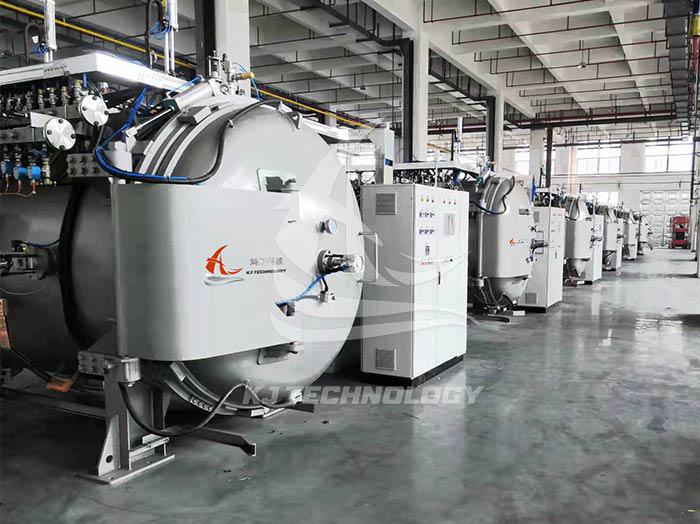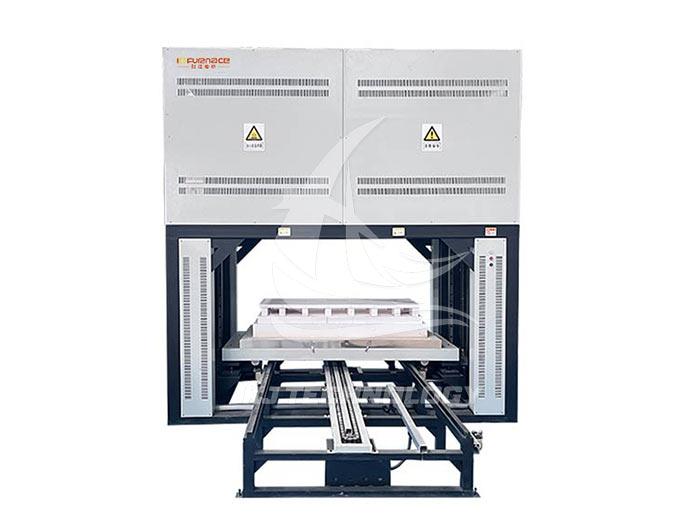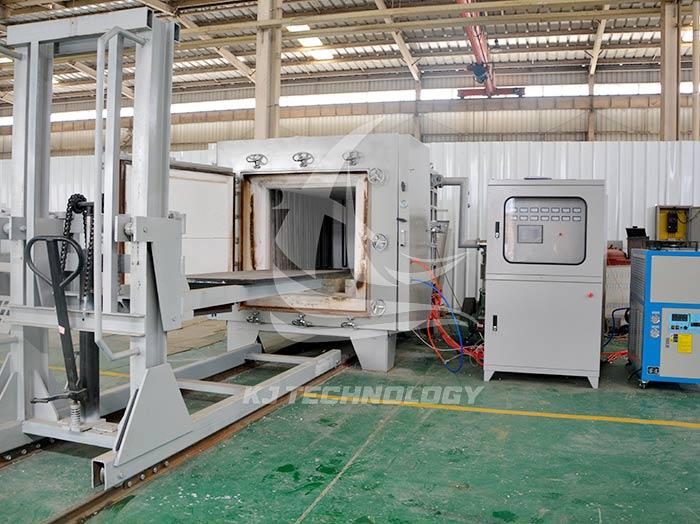Application of High Vacuum Hot Pressing Furnace in the Battery Industry
 07-18-2025 Author: KJ technology
07-18-2025 Author: KJ technology
The application of high vacuum hot press furnaces in the battery industry is mainly concentrated in the field of lithium battery manufacturing. Through the synergistic effect of vacuum environment and pressure, they play a key role in material preparation, electrode processing, battery packaging and other links, significantly improving battery performance and production quality. The following is an analysis of specific application scenarios and technological advantages:
1. Core application scenarios
Preparation of negative electrode material
Graphite negative electrode optimization: High vacuum environment can remove impurities and gases from graphite materials, improving material purity. For example, a certain enterprise processed graphite negative electrodes through a vacuum hot pressing furnace, increasing the specific capacity from 220mAh/g to 250mAh/g, prolonging the service life by 50% (from 200 cycles to 300 cycles), and achieving a product qualification rate of over 98%.
Silicon based negative extreme densification: Silicon based materials are difficult to apply due to volume expansion, and vacuum hot pressing suppresses grain growth through pressure, reducing the expansion rate. After hot pressing, the volume expansion rate of the silicon carbon composite negative electrode decreased by 30%, and the initial efficiency increased to 88%.
Electrode electrode processing
Hot pressing process improves performance: Under high temperature of 80-120 ℃ and pressure of 5-15MPa, hot pressing can optimize electrode structure:
Enhanced conductivity: The electrode is in closer contact with the current collector, reducing internal resistance by 15% -20% and improving charge and discharge efficiency.
Energy density improvement: Compaction density increases by 8% -12%, electrode rebound rate decreases to 2-3 μ m, and cell thickness tolerance is controlled within ± 0.03mm.
Extended cycle life: After 500 cycles, the capacity retention rate of the hot pressed battery cell reaches 92%, which is 7 percentage points higher than that of the cold pressed process.
Comparison of cold pressing processes: Although mechanical pressure can reduce porosity by 15% -20% at room temperature, the rebound rate is higher (4-8 μ m), and the low-temperature discharge performance and cycle life are inferior to those of hot pressing processes.
Battery packaging and testing
Vacuum packaging for pollution prevention: Encapsulating batteries in a vacuum environment can prevent moisture and gases from entering the air, improve sealing airtightness, and reduce the risk of liquid leakage.
Vacuum leak detection ensures safety: By using vacuum leak detection equipment to detect the sealing of the battery casing, the leak points are accurately located to ensure long-term stable operation of the battery.
2. Analysis of Technical Advantages
Inhibit oxidation and impurity doping
The vacuum environment (pressure<10 ⁻ ² Pa) reduces gas molecule collisions, lowers the probability of material reaction with oxygen and nitrogen, and results in a surface oxide layer thickness of<1 μ m and impurity content<0.01% on the negative electrode material, meeting the requirements of high purity.
Optimize microstructure and enhance mechanical performance
Pressure assisted sintering refines the grain size to the nanometer level (0.1-1 μ m), increases the grain boundary area by 30% -50%, increases the resistance to dislocation movement, increases material hardness by 20% -30%, and increases tensile strength by 15% -25%.
Enhance electrochemical performance
Discharge capacity improvement: Hot pressing treatment increases the discharge capacity of the battery by 15% at high rates.
Low temperature performance improvement: The discharge performance of hot pressed cells at -20 ℃ is 8% -12% higher than that of cold pressed cells.
Enhanced cycling stability: The hot pressing process reduces the structural changes and active material detachment of electrode materials during cycling, extending battery life by 10% -15%.
Realize efficient production and quality control
High degree of automation: using programmable logic controller (PLC) to achieve one click start, the LCD screen displays the equipment status in real time, making it easy to monitor and adjust process parameters.
Accurate temperature gradient control: The high-precision temperature control system ensures uniform temperature changes during the hot pressing process, avoiding the problem of increased internal resistance caused by the closure of membrane micropores.
3. Typical application cases
Power battery field
A certain car company uses a vacuum hot pressing furnace to produce power battery electrodes, which increases the energy density of the battery cells to 280Wh/kg, meeting the long range requirements of electric vehicles. At the same time, the hot pressing process reduces the internal resistance of the battery and supports fast charging technology, reducing charging time by 30%.
In the field of consumer electronics
A certain 3C battery manufacturer optimized the cell structure through hot pressing technology, resulting in a capacity retention rate of 92% for mobile phone batteries after 500 cycles, significantly improving the product's service life.
Energy storage field
A certain energy storage enterprise uses a vacuum hot press furnace to prepare negative electrode materials for sodium ion batteries. By suppressing the growth of sodium dendrites under pressure, the safety of the battery is improved and the cycle life is extended to over 5000 times.








